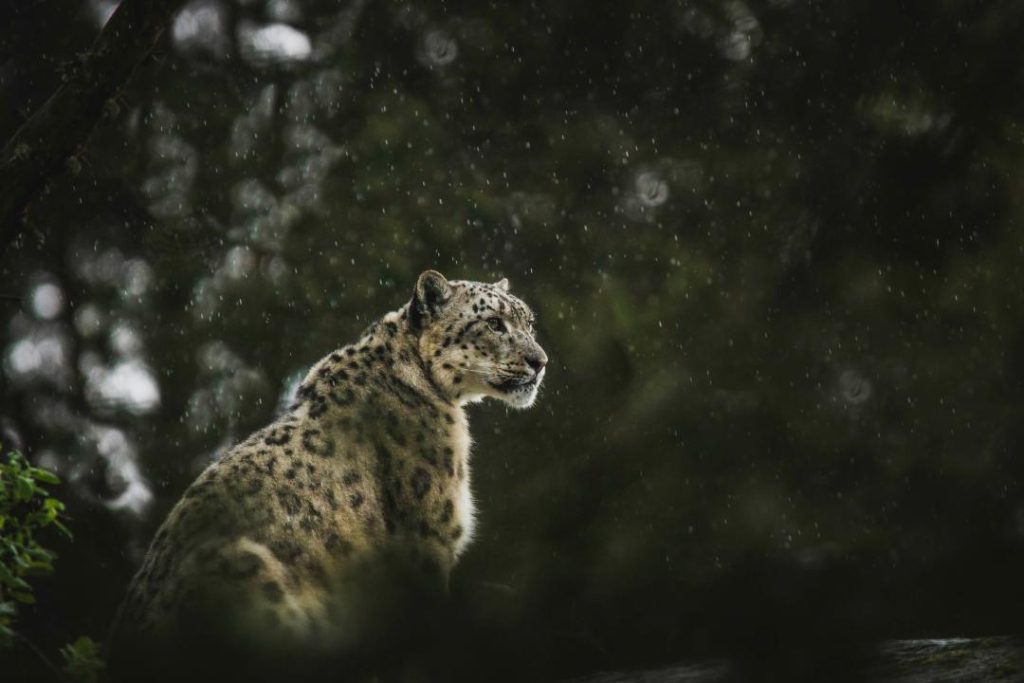
Balancing Human Activity and Wildlife Protection: Coexisting with Snow Leopards
The majestic snow leopard, a symbol of power and resilience, has long fascinated humans. Found in the mountain ranges of Central Asia, this elusive big cat is an integral part of the region’s ecosystem. However, its survival is threatened by human activities, such as intensive settlement and land-use changes. A recent study, conducted in Ladakh, has revealed high snow leopard densities in multi-use areas, indicating successful adaptation to coexist with local communities. While this is an encouraging sign, it also highlights the need for balanced land-use practices to ensure the long-term survival of these magnificent creatures.
The study, one of the most extensive surveys of snow leopards undertaken in Ladakh, aimed to understand the snow leopard’s distribution, density, and habitat use. The researchers surveyed 1,500 sq km of the Hemis National Park and its surrounding areas, using camera traps, sign surveys, and local knowledge. Their findings show that snow leopards are able to thrive in areas with high human density, provided that there are measures in place to mitigate human-wildlife conflict.
This coexistence is not surprising, given the snow leopard’s adaptability and flexibility. These big cats are skilled hunters, able to feed on a variety of prey, from small mammals to livestock. They are also solitary animals, with large territories that overlap with those of humans. In Ladakh, snow leopards have learned to coexist with local communities, who have developed strategies to minimize human-wildlife conflict.
For example, many local communities have adopted non-lethal methods to deter snow leopards from raiding their livestock. These methods include using noise-making devices, such as scarecrows or noise-producing devices, to frighten the big cats away. In some cases, communities have also established compensation schemes, where they pay farmers for losses caused by snow leopard attacks.
While these strategies have been effective in reducing human-wildlife conflict, they are not a panacea. Intensive human settlement and land-use changes continue to pose a significant risk to snow leopard populations. Habitat fragmentation, caused by the construction of roads, buildings, and other infrastructure, can reduce the availability of prey and increase the risk of human-wildlife conflict.
To address these challenges, it is essential to adopt balanced land-use practices that prioritize conservation and sustainable development. This can be achieved through the creation of protected areas, such as national parks and wildlife sanctuaries, which provide a safe habitat for snow leopards. It is also important to promote sustainable agriculture practices, such as permaculture and agroforestry, which can reduce the pressure on natural habitats.
In addition to these measures, engaging local communities in conservation efforts is crucial. This can be achieved through community-based conservation initiatives, which provide economic incentives for preserving snow leopard habitats. For example, local communities can be involved in ecotourism activities, such as wildlife watching and trekking, which can generate income and create jobs.
The benefits of community-based conservation are numerous. Not only do local communities gain economically, but they also develop a sense of ownership and stewardship for the snow leopard’s habitat. This can lead to a reduction in human-wildlife conflict, as local communities take steps to protect the snow leopard’s habitat and prevent attacks on their livestock.
In conclusion, the study in Ladakh highlights the importance of balancing human activity and wildlife protection. While snow leopards are able to thrive in areas with high human density, provided that there are measures in place to mitigate human-wildlife conflict, intensive human settlement and land-use changes continue to pose a significant risk to snow leopard populations.
To ensure the long-term survival of these magnificent creatures, it is essential to adopt balanced land-use practices that prioritize conservation and sustainable development. Engaging local communities in conservation efforts can create sustainable economic incentives for preserving snow leopard habitats, while also promoting coexistence between humans and wildlife.
By working together, we can ensure that snow leopards continue to roam the mountain ranges of Central Asia, a symbol of power and resilience for generations to come.
Source:
https://researchmatters.in/news/most-extensive-survey-elusive-snow-leopards-undertaken-ladakh






